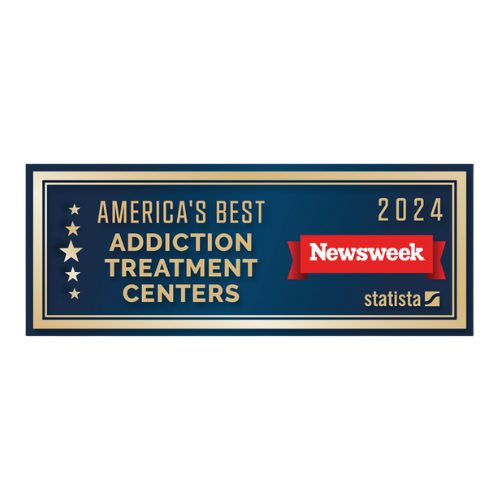Post-traumatic stress disorder, or PTSD, results when individuals experience some type of physical or emotional trauma, and while we all experience traumatic events in our lives, people who suffer from PTSD revisit the cause of their trauma obsessively.
For example, if you grew up in a home in which physical abuse was common, you’re likely to carry the scars of that abuse into adulthood. It may take the form of free-floating anxiety (anxiety that is NOT tied to a specific trauma), anger, insecurity, and even clinical phobias like agoraphobia – the fear of being around others, or a fear of public spaces like a shopping mall or restaurant.
Find peaceful serenity in Hawaii’s sounds of nature
PTSD is common among military personnel who’ve been stationed in a war zone, law enforcement personnel, or people who’ve experienced near-death experiences or have been victims of brutal crimes.
In the past, PTSD sufferers feared that others would discover their “hidden” condition. However, today PTSD is not only recognized as a serious emotional challenge, but there are also numerous therapies to address the root cause of PTSD.
It is possible to survive PTSD using a variety of therapies that enable PTSD sufferers to enjoy life to the fullest.

This article will give a better understanding of PTSD, the symptoms, and proper ways to treat the illness.
More infoThe Four Signs of PTSD
There are four broad categories of emotional reactions to trauma. Step 1 is recognizing you have PTSD and there’s no shame to your feelings. The four broad reactions to the traumas we all experience in life:
1. The first signal of PTSD might be intrusive thoughts,
common among PTSD victims. These thoughts force their way into our thinking. These experiences take many forms you might recognize including nightmares, panic attacks, flashbacks to the time and place a trauma occurred, and painful memories that PTSD sufferers can’t control. They’re always there.
2. The second sign of PTSD is heightened awareness or sensitivity.
Traumatized victims see risk where none exists. These individuals may also have personal “triggers” that create heightened stress levels. A person who survived a plane crash, for instance, may be reluctant to get back on a plane. Many people with PTSD change their behaviors to avoid additional stress or panic attacks.
Do you avoid certain people, certain places, certain foods – in other words, have you changed your activities and routine out of fear? Does PTSD control your thought processes, or force you to employ adaptive tactics like sitting on the aisle or avoiding large crowds of happy neighbors who would welcome you?
If you have PTSD, you change your life to avoid emotional pain.
3. The third category of PTSD symptoms involves your reactions to everyday activity.
Do you experience fear in large spaces, small spaces, or spaces painted green? Does the smell of a Christmas tree dredge up memories of painful holidays in your past? Are you easily startled? Do carry around guilt for years, decades – a lifetime?
People with PTSD often have a heightened awareness of their environments. Lights seem brighter, noise is louder, flashing strobe lights are painful to watch – people with PTSD view our world differently from people who think the loud, thumping beat and mirror ball are exciting. Too many PTSD sufferers experience “inappropriate” reactions to the stimuli around them. Why do some people seek out the thrill of an amusement park rollercoaster, while others of us won’t even go to an amusement park? Too many people. too much activity, too much noise.
The brain switches to the “fight or flees” mode we’ve inherited from our ancestors, even though there’s nothing to fight or flee from. Many PTSD sufferers are on high alert even when there’s no danger. That heightened sensitivity to benign stimuli is tiring. Over the years, these people live a very “confined” life. Their worlds shrink to their own homes or even a room within the home.
4. Anything to avoid triggering a full-blown panic attack.
Ultimately, a PTSD sufferer may employ tactics for escape and avoidance, fearful that others will discover the fierce activity taking place within the inner self.
PTSD may show itself in other ways including unexplained sadness, hypersensitivity to environmental stimuli, disassociation with long-time friends, anticipation anxiety over an event that’s weeks, even months in advance, aggression, emotional denial, and other symptoms that counselors recognize.
PTSD shrinks the world of the sufferer until emotional pain relief is the only thing these people seek – and that’s where substance abuse gets a foothold. PTSD individuals turn to drugs, alcohol, or self-destructive behaviors in a misguided effort to relieve the emotional pain they carry with them every day.
PTSD Therapies
PTSD is treated in many ways. In some cases, pharmaceuticals like Xanax, Atarax, and Effexor XR are prescribed to lower feelings of stress. However, many professionals believe these prescription medications mask the symptoms while failing to address the underlying root cause of PTSD.
Another evidence-based therapy for PTSD is called Eye Movement Desensitization and Reprocessing, a highly successful, non-invasive treatment that “rewires” the brain and disrupts harmful thought processes, giving people an opportunity to heal themselves employing proven techniques to eliminate or mitigate stress levels.
Another proven treatment is Cognitive-Behavioral Therapy or CBT. This therapy employs goal setting and positive feedback from the practitioner/therapist.
There are numerous other treatment options to address PTSD at its core. Instead of masking symptoms, these therapies address the underlying causes that contribute to each individual’s PTSD.

Post-traumatic stress disorder, or simply PTSD, is a condition that affects people long after they experience a traumatic event. At Hawaii Island Recovery, patients have therapeutic alternatives to deal with and overcome trauma.
More infoTake Back Your Life
Life isn’t much fun for people who carry this “hidden” condition. The fear of being found out is always worrisome. Going to parties? Never going to happen. Even a quiet dinner with your spouse causes anxiety. You project all the things that could go wrong, even though there’s virtually no evidence of a danger…no need to fight or flee.
Learn about desensitization tactics, distraction strategies, and how to manage PTSD and finally enjoy life again.
Enjoy the quiet solitude of Hawaii Island Recovery
Contact Hawaii Island Recovery located on the Big Island of Hawaii. Talk to one of the professionals and discover how to face the daily challenges you face living with PTSD.
You are not alone!
 Hawaii Island Recovery
Hawaii Island Recovery 










